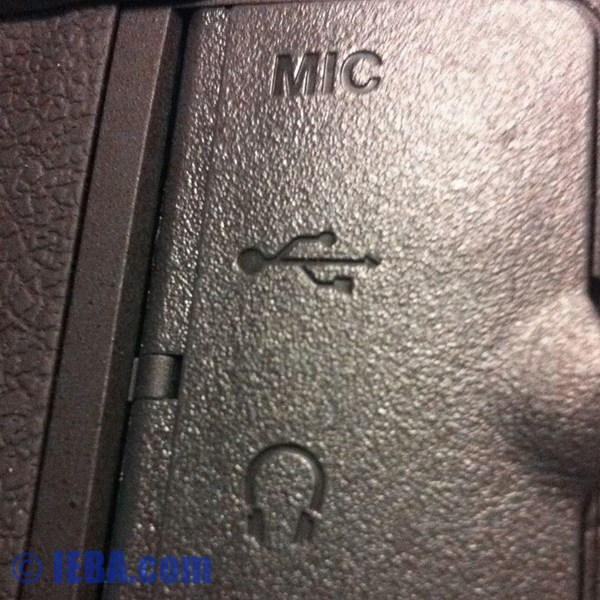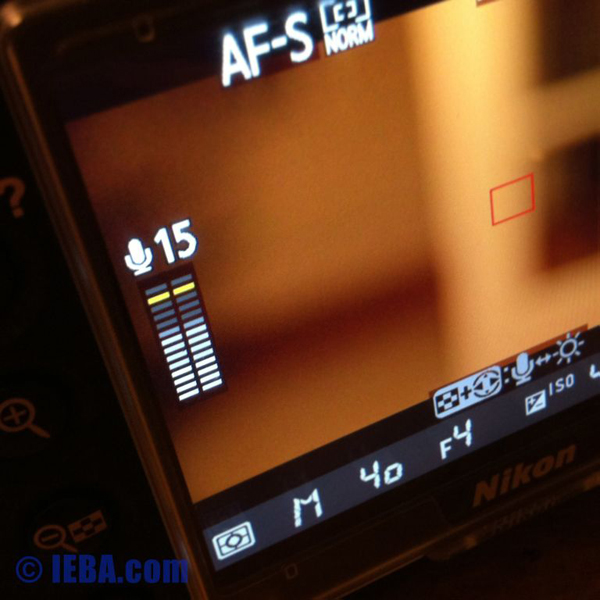Review: Nikon D800 DSLR Camera, Part 1
In this two-part series, we'll examine how well Nikon's much-heralded D800 DSLR works as a video camera, in terms of operability and functionality. In part two, we'll report on some audio and video tests comparing the D800 to another highly regarded DSLR, and to a more traditional prosumer camcorder.
Recently, DSLRs have started to add microphone jacks. This reduces the need to record audio with a separate audio recorder and go through extra steps to sync up the two sets of media later. But these mic jacks have not always been entirely usable because there was no way to monitor the audio the DSLR was actually recording. Some cameras' auto gain control (AGC) introduced unwanted noise and "pumping" of the audio.
At this writing, DSLRs are just now starting to move to more capable manual audio control, better in-camera metering, and incorporating a headphone jack which enables the operator to hear exactly what the camera is recording--including audio clipping, clothing rustle, and other mic noises (Figure 1, below). This way, the operator immediately knows there's a problem, as opposed to finding out in post.

Figure 1. Mic and Headphones: two great tastes that taste great together.
Nikon D800 Audio Features
The D800 offers both a 1/8" stereo microphone input and a 1/8" stereo headphone jack. The camera displays stereo audio meters onscreen with 14-step, tri-color metering, 20 levels of manual audio adjustment, plus "auto" levels and microphone off (Figure 2, below). There's also a 30-step headphone volume adjustment. This all sounds great. The downside to these incredibly useful features is that neither the microphone level nor the headphone level can be varied while you are recording. This doesn't make a lot of sense in terms of needing to compensate for something as it happens.

Figure 2. Can you hear me now?
Having to stop the camera, adjust the audio level, and then start the camera again, demonstrates that still camera manufacturers are still thinking that their target market is largely limited to filmmakers. These are people who set everything up for a shot, shoot that shot, and then stop. They shoot, make adjustments, and then shoot that shot again. Corporate video, live events, documentary production, and other types of video and film projects that can otherwise benefit from the numerous advantages of DSLR shooting, often require adjustments to be made during a shot. Clearly, many still camera engineers have not fully wrapped their heads around this need. You won't find a prosumer camcorder that can't adjust audio while recording.
I also took time to connect a good external microphone and test the various settings in the camera, and also record that same microphone to an external audio recorder. We'll have those test results in part 2 of this review.
Nikon D800 Ergonomics
I've shot with some DSLRs that are smaller than the D800 and found the operational balance on DSLRs lacking. Again, the manufacturers are used to designing cameras for someone who operate a camera with two hands (one hand supporting the lens), take some pictures, and put the camera back down. Video, on the other hand, requires the operator to take at least 24 pictures a second, for minutes at a time--1, 5, 10, or more. For example, if you're covering a corporate event and the CEO goes up to make a speech, you have to keep the camera rock steady for the next 12 minutes.
With an on-shoulder ENG camera, this was never an issue because the camera weight rested on the operator's shoulder. With prosumer camcorders like the Panasonic AC160, the camera weight is pretty well balanced forward and back, and the operator's hand is placed close to the center of the camera, making it much easier to hand-hold for long periods of time. Part of this has to do with the glass. A camcorder has less and smaller glass because it has a smaller chip. Move up to an APSc or full-frame sensor, and a high-quality lens can add more than the full weight of the camera body to the load, as shown in Figure 3 (below). Plus it's positioned far to the side, and in front, so your right hand is constantly working against the torque it creates.

Figure 3. DSLR: front-heavy. Camcorder: front-to-back balance.
Related Articles
D7100 features 24.1 megapixel CMOS sensor, 51 focus points including 15 cross-type sensors, 100-6400 ISO range, and new WU-1a wireless mobile adapter
In the P7700, Nikon has improved on earlier P7000 models with numerous video formats and a microphone input, plus a tilt-swivel display and several under-the-hood improvements. Is this the video-and-stills powerhouse I've been waiting for?
In Part 1 of this two-part series on the Nikon D800, I looked at the operation and functionality of the D800 DSLR as a video camera. Now, in Part 2, I'll share some usability notes, as report the results of some audio and video tests (with test footage) comparing the D800 to another highly regarded DSLR, the Panasonic GH2--to see if a lower-priced but very capable DSLR can measure up with quality glass--and to a more traditional prosumer camcorder.